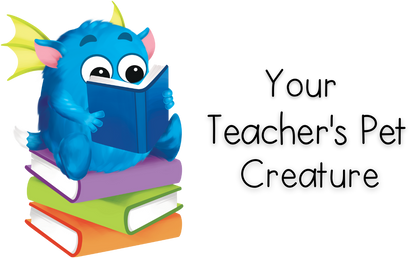Your Cart is Empty
Learning Topics
Best Sellers

Emotional Regulation: Exercises and Strategies for the Classroom
by Jonathon Denholm February 28, 2022 4 min read
A Skill that Determines Outcomes
One of the biggest determining factors of whether classroom management is successful is the emotional regulation of its students.Studies show that students who have trouble managing their emotions in the classroom are often less successful in terms of academics. For students to be able to function and learn in the classroom, they must develop a specific set of skills to help them cope, even when their emotions feel huge and their coping strategies are tested. As teachers, we know that real learning begins with successful foundations. Once we provide those essential skills to the students, we can then go forth and teach the course material.
Understanding the Reasoning Behind the Behaviors
Children havehuge emotions, and by nature, they don’t have a whole lot of experience or wisdom dealing with those emotions.Some children have a harder time managing their emotions for a myriad of reasons. In order to help these students regulate their behavior, we must first understand, and help them to understand, the reasoning behind their root emotions.
Although certain behavior patterns can seem entirely devoid of logic, there’s usually a trigger that can be pinpointed. If we can help our students identify emotions and understand why they are there, we can help them figure out what they’re trying to tell us.From there, we can work with those emotions to help our students to become as successful as possible. The end goal is not to eliminate emotions altogether, but instead to acknowledge them and help our students manage them.
Setting the Example
We must set the example as teachers, especially when things get difficult in the classroom. Of course, most teachers have extraordinary levels of patience and an innate ability to assess a situation and make decisions. However, when we start to get overwhelmed, talking through our emotions and thought processes with our students can be very helpful.Modeling has been proven to help students understand and retain information on a deeper level. Modeling these skills for the students allows them to observe and understand what it looks like to put these lessons into action.
Classroom-Friendly Emotion Regulation Strategies
In order for teachers to best introduce these skills and strategies to students, we must first find effective, inexpensive ways to implement them in theclassroom. We also must be kind to ourselves and our students throughout this process. Learning and implementing these skills can be a bumpy process, especially when students don’t have these behaviors modeled for them at home. Coming up with a strategy to deal with emotions in the classroom can provide a game plan for addressing these issues before they arise. Once we have addressed the underlying issues and motivations driving these emotions, we can work to change the focus to something productive. These target behaviors provide an appropriate place for students to direct their energy. Once the target behaviors are identified, we can encourage our students to enact them with incentives and rewards.
Creating an Environment Conducive to Emotional Regulation
We can learn a lot by simply observing our own classrooms and their flow. It is so essential that we create classrooms with environments that are conducive to teaching and learning emotional regulation. With the right setup, social emotional learning can be integrated seamlessly into the classroom. One of the most important factors when trying to create the ideal physical classroom space is that we ensure that we have a cool, calm environment where we can teach our students.
Strategies & Activities for Teaching Emotional Regulation Skills in the Classroom
There are so many resources out there forteaching coping strategies within the classroom. Coping skills are essential for behavior management. We have to explicitly teach these skills to our students to improve their self-esteem, independence, and generally help them manage their behavior. The end goal of this is not only success within academic settings, but also when they are dealing with social situations. Emotional learning is something that comes more naturally to some students than others. Students simply cannot regulate their own emotions if they aren’t taught specific tools and strategies to help them with that. Something as simple as teaching your students breathing exercises can make a difference in their self-regulation abilities.
There are so many fun regulation activities that you can try with your class to improve emotion regulation. Some of these include duck, duck, goose, statues, don’t break the ice, and jenga. Remember, the goal is for the students to learn emotion regulation, not for them to eliminate emotions altogether. These activities put students in situations where they will inevitably have the opportunity to practice managing their emotions with the tools you are providing them.















